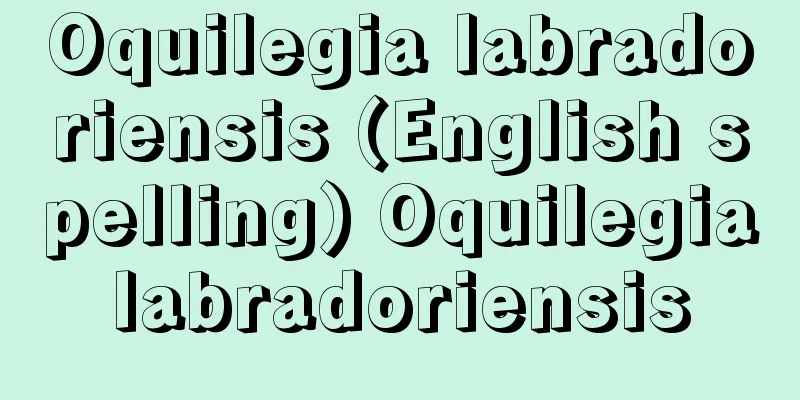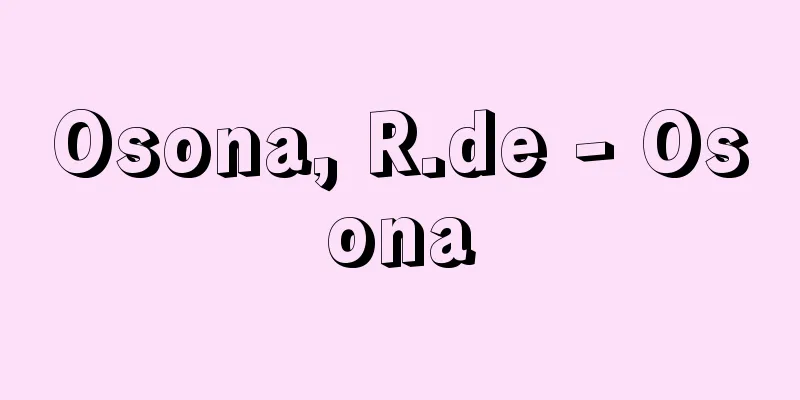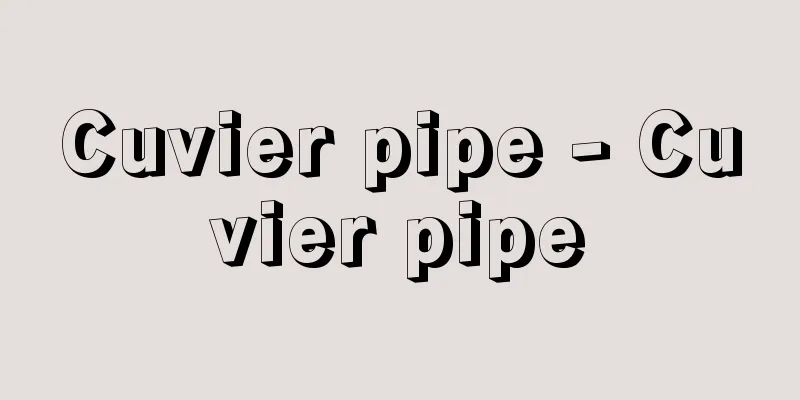Restriction enzyme

|
An endonuclease that recognizes a specific base sequence in a double-helical DNA chain and cleaves the inside of the chain. It is produced by bacteria, and the specificity varies depending on the species. It is widely used as an essential tool for gene structure research and genetic engineering. When a bacteriophage infects a bacterium and invades the phage DNA, the bacterium protects itself by cutting the phage DNA. This is called the restriction phenomenon, and the enzyme that cuts DNA is called a restriction enzyme. A restriction enzyme binds to a specific base sequence in the invading DNA strand and cuts both strands forming a double helix at that position or at a position some distance away. The sequence that a restriction enzyme recognizes is often about six bases (for example, GAATCC), but the sequence varies depending on the type of bacteria. The same sequence is also contained in the bacteria's own DNA, but the adenine or cytosine in the sequence has been methylated by the bacteria themselves, so it is not recognized by the enzyme and is not cut. In other words, to protect themselves from bacteriophages, bacteria have a set of restriction enzymes and enzymes that methylate specific sequences in their own DNA. The probability that the specific sequence recognized by a restriction enzyme exists in a DNA strand is very low, so when restriction enzymes are used to cut DNA, fairly long fragments are obtained. For example, if the recognition sequence is six bases long, the probability of its existence is 1 in 4096 (4 to the power of 6). Therefore, a long DNA strand can be cut into fragments several thousand bases long on average. Also, since the base sequences recognized differ depending on the bacterium, various fragments with different cutting positions can be obtained by using restriction enzymes from various bacteria alone or in combination. This has made an immense contribution to DNA research. It is fair to say that the most important tools supporting today's life science research, both basic and applied, are the use of restriction enzymes and the PCR method. Without restriction enzymes, genetic engineering would not have begun yet. For their contributions to restriction enzyme research, W. Alber, H. O. Smith, and D. Nathans were awarded the Nobel Prize in Physiology or Medicine in 1978. There are several types of restriction enzymes, but most of those used today are type II. Type II enzymes cut DNA strands within or at the ends of their recognition sequence. There are several patterns of cutting, including cutting the two strands with the ends aligned and cutting them offset. In addition, the recognition sequence is often a palindrome. For example, the recognition sequence of Eco R I, the most representative restriction enzyme derived from Escherichia coli, is 6 bases, 5'-GAATTC-3'. The complementary strand has a corresponding 3'-CTTAAG-5', but the direction is opposite (antiparallel), so the actual sequence is still 5'-GAATTC-3' when taken into consideration. In other words, the recognition sequence has a double helix with a two-fold axis of symmetry, and the structure is the same whether read from the right or the left. Eco R I recognizes and binds to such a part and cuts between G and A. The two strands are cut symmetrically, resulting in an uneven cross section. The protruding parts can interact with each other in a complementary manner, so they are called sticky ends ( ). This acts as a specificity link, so that fragments of different origins can be joined by gluing the ends together and then joining them using a joining enzyme, if they were cut with the same EcoRI . This allows the splicing of DNA to create recombinant DNA. Today, more than 200 restriction enzymes with various sequence specificities are commercially available as laboratory reagents. On the other hand, some enzymes cleave both strands at the same position to create blunt ends. For example, Sma I from Serratia marcescens recognizes the six bases shown in and cleaves them in the middle. Some type II enzymes do not have palindromic recognition sequences. In addition to type II, there are also types I, III, and IV restriction enzymes, but as they are not yet widely used as tools in life science, we will not go into detail here. Type I enzymes combine a decomposition enzyme with an enzyme that methylates the recognition sequence. Types III and IV have more complex functions than type II. [Kenichi Kasai] [References] | | | | | | |©Shogakukan "> Recognition sequence of EcoRI (Fig. A) ©Shogakukan "> SmaI recognition sequence (Fig. B) Source: Shogakukan Encyclopedia Nipponica About Encyclopedia Nipponica Information | Legend |
|
二重螺旋(らせん)DNA鎖中の特定の塩基配列を認識して、鎖の内部を切断するエンドヌクレアーゼ。細菌が生産し、種によって特異性が異なる。遺伝子の構造研究や遺伝子工学のために不可欠な道具として広範に利用されている。 細菌にバクテリオファージが感染し、ファージDNAが侵入すると、細菌はこのファージDNAを切断して自身を守る。これを制限現象とよび、DNAを切断するための酵素を制限酵素とよぶ。制限酵素は侵入DNA鎖中の特定の塩基配列の部位に結合して、その位置あるいはある程度離れた位置で、二重螺旋を形成している2本の鎖を両方とも切断する。制限酵素が認識する配列は6塩基程度(たとえばGAATCC)のことが多いが、その配列は細菌の種類によって異なる。細菌自身のDNAにも同じ配列が含まれているが、その配列中のアデニンあるいはシトシンが細菌自身によってあらかじめメチル化されているので、酵素に認識されず、切断もされない。つまりバクテリオファージから自身を守るために、細菌は制限酵素と、自己DNA中の特定配列をメチル化する酵素をセットとして備えている。 制限酵素が認識する特定配列がDNA鎖中に存在する確率はかなり低いので、制限酵素をDNAの切断に利用すると、かなり長い断片が得られる。たとえば認識配列が6塩基の長さだとすると、存在確率は4096(4の6乗)分の1になる。したがって長大なDNA鎖を平均して数千塩基の長さの断片に切り分けることができる。また認識される塩基配列が細菌によって異なるので、さまざまな細菌由来の制限酵素を単独あるいは組み合わせて利用すれば、切断位置が異なるさまざまな断片を得ることができる。このことがDNAの研究にもたらした貢献は限りなく大きい。基礎および応用を含めて、今日の生命科学研究を支えているもっとも重要な手段といえば、制限酵素の利用とPCR法といって差し支えない。制限酵素がなかったら、遺伝子工学はいまだ始まっていなかっただろう。制限酵素研究の功績により、W・アルバー、H・O・スミス、D・ネイサンズが1978年にノーベル医学生理学賞を受賞している。 制限酵素にはいくつかのタイプがあるが、今日、利用されているのはほとんどがⅡ型に属する。Ⅱ型酵素は認識配列の内部あるいは端でDNA鎖を切断する。切り方にもいくつかのパターンがあり、2本の鎖を端でそろえて切るものと、ずらして切るものとがある。また認識配列がパリンドローム(回文)になっている場合が多い。たとえば、もっとも代表的な制限酵素である大腸菌由来のEcoRⅠの認識配列は5'‐GAATTC‐3'の6塩基である。相補鎖にはこれに対応して3'‐CTTAAG‐5'が並んでいるが、方向性が逆なので(逆平行)、それを考慮すると実際の配列はやはり5'‐GAATTC‐3'となる。つまり認識配列部分では二重螺旋が2回対称軸をもち、右から読んでも左から読んでも同じという構造になっている。EcoRⅠはそのような部分を認識して結合し、GとAの間を切断する。2本の鎖は対照的に切られるので、断面が不ぞろいになる。突出した部分どうしは相補的に相互作用できるので付着末端という()。 これが特異性をもつのりしろの役目を果たし、由来が異なる断片であっても、同じEcoRⅠで切られていれば、末端どうしを接着させてから、結合酵素を使ってつなげることができる。こうして組換えDNAをつくるためのDNAの切り張り細工が可能になる。今日ではさまざまな配列特異性をもつ200種類以上の制限酵素が研究用試薬として市販されている。 一方、2本の鎖を同じ位置で切断して平滑な末端をつくるものもある。たとえばセラチア菌由来のSmaⅠは、のような6塩基を認識して、真ん中で切断する。 Ⅱ型酵素であっても認識配列がパリンドロームでないものもある。 制限酵素にはⅡ型のほかに、Ⅰ型、Ⅲ型、Ⅳ型があるが、生命科学の道具としてはまだほとんど利用されていないので、詳細は省略する。Ⅰ型酵素は、分解酵素とその認識配列をメチル化する酵素とが一体化している。Ⅲ型、Ⅳ型などは、Ⅱ型に比べて作用が複雑である。 [笠井献一] [参照項目] | | | | | | |©Shogakukan"> EcoRⅠの認識配列〔図A〕 ©Shogakukan"> SmaⅠの認識配列〔図B〕 出典 小学館 日本大百科全書(ニッポニカ)日本大百科全書(ニッポニカ)について 情報 | 凡例 |
>>: Seigen Gyōshi - Seigen Gyōshi
Recommend
Joint action theory
…Especially during the 19th century German common...
Nobuyuki Okouchi - Nobuyuki Okouchi
...A small to medium-sized fudai domain with its ...
Itame - Itame
A board with wood grain that appears as curved lin...
Isegamori - Isegamori
…The Tsuna Hills, made up of granite rocks, were ...
Sonata form
This form was the preferred form for structuring ...
Empress's Palace Office
〘Noun〙① Under the Ritsuryo system, this was an off...
Cabot, S.
…Navigator and cartographer. Italian name Giovann...
Mott, Lucretia
Born January 3, 1793 in Nantucket, Massachusetts [...
SCC - Software Consultant Corporation
Official company name: SCC Corporation. Commonly k...
Senki
A Chinese poet from the mid-Tang Dynasty. His cou...
Wat Sutat (English spelling)
…Wat Trimit Temple has a 3m-tall, 5.5t-weight pur...
Tibbato
...The revolt was put down by the Roman army four...
Metal crowns
…A general term for artificial teeth, also called...
Solid South
In the United States, southern states showed suppo...
Fish finder - Gyotan
〘Noun〙 Abbreviation of "gyoguntanchiki (fish ...




![Nukabira [Hot Spring] - Nukabira](/upload/images/67cc745ab82cb.webp)




